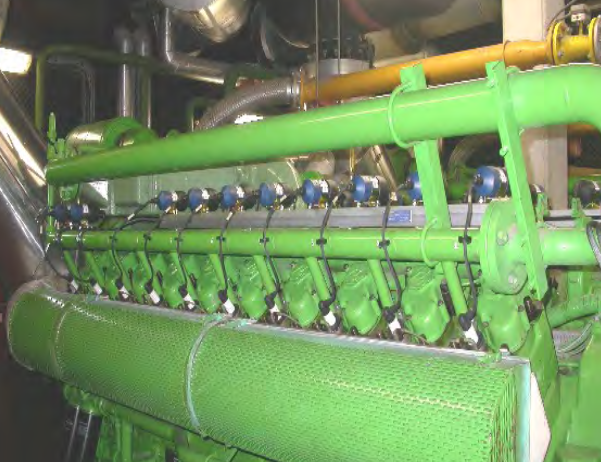
If your gas-powered static combustion engine is stuttering, jamming, or cutting out while in use, there may be something wrong with the ignition system. The most common cause of a system failure such as misfiring is a faulty, degraded, or dead spark plug
Ignition system failure occurs when the engine fails to ignite and burn the gas mixture fed into the intake. For whatever reason, sparks are not made quickly enough to light the gas and turn the internal cylinders. This can lead to a sub-par or broken industrial engine, with performance degrading even further over time to a state of complete failure.
But how can you know exactly what mechanical fault is causing your ignition failure? Here’s our guide to the various signs you should look out for. Once you’ve found out what is ailing your engine, you can diagnose the problem precisely and find a solution.
Cracked Spark Plug
If the porcelain shell, metal casing, or metal contacts around the spark plug are cracked, dented, or flaking, the spark plug may have been damaged during installation or degraded in quality through intense or prolonged use.
Spark plug degradation is unavoidable over long periods of wear. High voltages cause the spark plug to lose mass over time, an effect that’s particularly noticeable in traditional copper components. Cracked porcelain also lowers the spark plug’s ability to dissipate heat.
Degradation results in the spark plug developing a higher level of resistance to electricity. This increases the amount of energy required to make a spark. Increasing misfires and stalls may be signs your spark plug is cracking or developing a higher level of resistance to the coil’s charge.
They can also be damaged by severe bumps to the engine, most commonly during a botched installation or removal. Over-torqueing the plug can cause cracks to develop. If your plug is new, you may want to check the rest of the engine for faults as well. The problem can usually be solved by buying another compatible industrial spark plug and installing it in place of the old one.
Fouled Spark Plug
All types of spark plug gradually create carbon residue on their contact points when in use. This gradual carbonisation effect reduces the effectiveness of the spark plug, eventually blocking electric transmission altogether. A build-up of siloxanes can develop if the engines are running on other gases like sewerage and landfill gas. Sporadic misfires and engine stalls are signs that your spark plug is fouled.
As above, you should purchase a brand new, compatible spark plug and install it. If the damage is minimal, see if you can clean off your existing spark plug. Make sure that any spark plug housings and contacts in the engine are cleared of debris before doing so.
Weak Ignition Wire Installation
Ignition wires transfer the electrical charge from the engine directly to the spark plugs, creating combustion on demand. If an ignition wire is loose, faulty, or degraded, the spark plugs can lose power rapidly and performance can decline. This may persist even after changing the spark plug itself. Although they can’t function without a plug, the coil and wiring are separate pieces of equipment. To deal with poorly installed, broken, or worn-out ignition wires, have a qualified engineer replace or reinstall the ignition contact loop.
Faulty Ignition Coil
Ignition coils transform low voltage charges into high voltage ones to power the spark plug. They can wear out, break, become fouled, or carbonise if left unchecked for too long. This causes the electric charge held by the coils to fail to reach the spark plugs, resulting in misfires and failures as the coil degrades. As with spark plugs, shocks, debris, and carbonisation can all cause harm. To solve this problem, you should have a qualified technician reinstall, clean, or replace the ignition coils in your industrial gas engine.
Spark Plug & Engine Ignition Systems With RM Walsh
At RM Walsh, we stock all kinds of spark plugs, coils, and ignition parts for industrial combustion engine repair and maintenance. Contact us for advice on what you’ll need to get your gas-powered engines back to top condition.
 Apply for an Account
Apply for an Account Log In
Log In 0Basket
0Basket Checkout
Checkout
 01782 983376
01782 983376 info@rmwalshltd.co.uk
info@rmwalshltd.co.uk 
